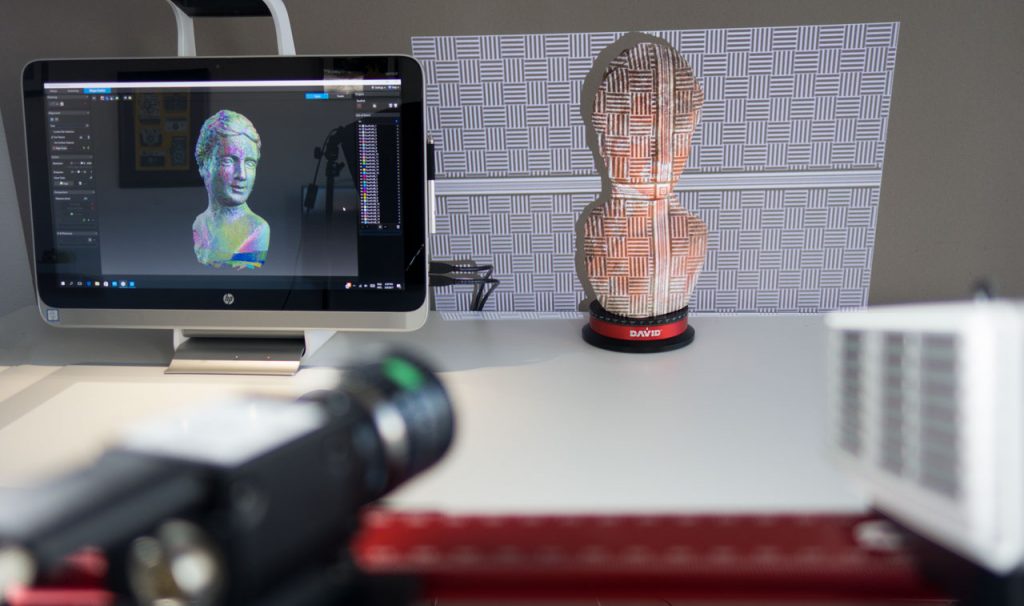3D Scanning is a modern technology that is revolutionizing various industries by providing highly accurate digital replicas of physical objects and environments. With its ability to capture fine details, 3D scanning offers unprecedented advantages over traditional measurement techniques. In this article, we will explore the various aspects of 3D scanning including its working principle, applications and future potential.
What is 3D Scanning?
3D scanners come in various types such as laser scanners, structured light scanners and optical scanners. They use different technologies like laser triangulation, time-of-flight measurement and photometric stereo to capture the three-dimensional geometric information of the object including its texture. This information is then processed to build up a precise digital 3D representation which can then be edited, analyzed or 3D printed.
Working of a 3D Scanner
An active 3D scanner projects a structured pattern of light on the object and analyzes its deformation to construct digital triangles that represent its surface shape. Laser scanners use laser beams to probe specific points on the surface and measure their distances using the time-of-flight principle or triangulation. Meanwhile, optical scanners analyze photographs taken from different angles and use optical flow algorithms to obtain depth maps that are fused to reconstruct the shape. Once scanned, the millions of data points captured can be processed to reconstruct an incredibly detailed and accurate 3D digital model.
Applications of 3D Scanning
The versatility of 3D scanning has enabled its adoption in a wide variety of industries and applications. Let us explore some of its major uses:
– Heritage Preservation: Cultural heritage sites, monuments and artifacts can be carefully scanned at high resolution to create digital archives and 3D replicas to preserve important historical structures.
– Industrial Quality Control: Precision components, mechanical parts and complex assembled products are scanned to verify dimensional accuracy and detect defects in manufacturing. Reverse engineering is also done for customized part reproduction.
– Forensic Investigation: 3D scanners are used by crime scene investigators to capture detailed 3D models of areas and evidence for analysis, crime scene reconstruction and courtroom visualization.
– Prosthetics and Orthotics: Medical 3D Scanning capture body shapes and limb structures to create customized prosthetics, orthotics and implants matched precisely to patient anatomy.
– Entertainment: Film and video game production utilizes 3D scanning to digitize actors, creatures, objects and environments for virtual production and special effects. Facial scanning is common for character animation.
– Architectural Visualization and Planning: Buildings and interiors can be scanned to produce virtual building information models for remodeling, construction planning and walkthroughs prior to the commencement of actual construction work.
– Fashion and Apparel: Mannequin scanners digitize human body types to create size charts for garment pattern design and fitting. Customized clothing can also be manufactured using 3D body scans.
Benefits of 3D Scanning
Some key advantages that 3D scanning provides over traditional techniques are:
Accuracy – 3D scanners can capture geometries with microscopic precision down to fractions of a millimeter, enabling highly accurate digital reproductions. Complex curves, cavities and fine surface details are represented faithfully.
Efficiency – The digitization process is fully automated requiring minimal human intervention. Large and unwieldy objects can be scanned without difficulty. Measurements are also consistent, repeatable and scale-independent.
Versatility – A wide range of materials from soft tissues to reflective metals can be scanned. Live objects, environments and even intangible spaces like crime scenes can also be digitized.
Preservation – 3D models provide a permanent digital record that can be stored safely, retrieved indefinitely and reproduced without deteriorating like physical artifacts.
Interoperability – Scan data is in an open, non-proprietary format compatible with all major CAD/ CAM software. Models can be easily modified, shared and 3D printed across different platforms.
Future Outlook
The adoption of 3D scanning is projected to accelerate in the coming years with enhanced capabilities emerging across sectors. Several trends are likely to shape its future growth:
– Portability: Hands-free, compact scanners are being developed for capturing objects on the go and in hard to reach locations. Wireless configurations remove tethering restrictions.
– Densification: Scanning speeds, resolutions and point densities are improving to represent intricate details faster. Gigapixel cameras and laser systems enable hyper-detailed scans.
– Automation: Robotic scanning arms and autonomous operation streamline digitization workflows. Computer vision aids fully-automated surface reconstruction.
– Mobility: Integration of 3D scanning into mobile devices brings immersive virtual experiences to consumer applications like cultural heritage, virtual try-ons and mixed reality.
– Scalability: Large scale metrology scans extended volumes in a single capture for architectural modelling, factory layouts and civil engineering projects.
– Cost Reduction: Demand growth and technological progress will lower 3D scanner prices to make high-fidelity 3D capture accessible to more professionals and consumers.
3D scanning is poised to completely transform the way physical objects are perceived, shared and utilized across a multitude of domains. Its non-contact, highly-detailed capture capabilities will continue providing innovative solutions to various industrial and creative challenges. As the technology matures further, 3D scanning will become increasingly commonplace in everyday life.
Note:
1. Source: Coherent Market Insights, Public sources, Desk research
2. We have leveraged AI tools to mine information and compile it



